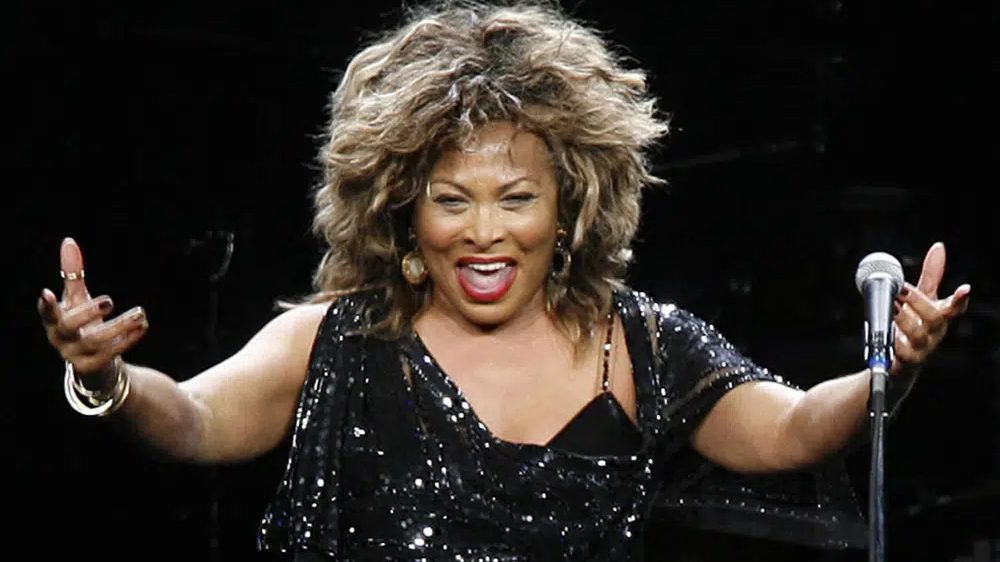Tina Turner, unstoppable superstar whose hits included ‘What’s Love Got to Do With It,’ dead at 83
Turner died Tuesday, after a long illness in her home in Küsnacht near Zurich, Switzerland, according to her manager.

FILE - Tina Turner performs in a concert in Cologne, Germany on Jan. 14, 2009. Turner, the unstoppable singer and stage performer, died Tuesday, after a long illness at her home in Küsnacht near Zurich, Switzerland, according to her manager. She was 83.
NEW YORK (AP) — Tina Turner, the unstoppable singer and stage performer who teamed with husband Ike Turner for a dynamic run of hit records and live shows in the 1960s and ’70s and survived her horrifying marriage to triumph in middle age with the chart-topping “What’s Love Got to Do With It,” has died at 83.
Turner died Tuesday, after a long illness in her home in Küsnacht near Zurich, Switzerland, according to her manager. She became a Swiss citizen a decade ago.
Few stars traveled so far — she was born Anna Mae Bullock in a segregated Tennessee hospital and spent her latter years on a 260,000 square foot estate on Lake Zurich — and overcame so much. Physically battered, emotionally devastated and financially ruined by her 20-year relationship with Ike Turner, she became a superstar on her own in her 40s, at a time when most of her peers were on their way down, and remained a top concert draw for years after.
With admirers ranging from Beyoncé to Mick Jagger, Turner was one of the world’s most successful entertainers, known for a core of pop, rock and rhythm and blues favorites: “Proud Mary,” “Nutbush City Limits,” “River Deep, Mountain High,” and the hits she had in the ’80s, among them “What’s Love Got to Do with It,” “We Don’t Need Another Hero” and a cover of Al Green’s “Let’s Stay Together.”
Her trademarks were her growling contralto, her bold smile and strong cheekbones, her palette of wigs and the muscular, quick-stepping legs she did not shy from showing off. She sold more than 150 million records worldwide, won 12 Grammys, was voted along with Ike into the Rock and Roll Hall of Fame in 1991 (and on her own in 2021) and was honored at the Kennedy Center in 2005, with Beyoncé and Oprah Winfrey among those praising her. Her life became the basis for a film, a Broadway musical and an HBO documentary in 2021 that she called her public farewell.
Until she left her husband and revealed their back story, she was known as the voracious on-stage foil of the steady-going Ike, the leading lady of the “Ike and Tina Turner Revue.” Ike was billed first and ran the show, choosing the material, the arrangements, the backing singers. They toured constantly for years, in part because Ike was often short on money and unwilling to miss a concert. Tina Turner was forced to go on with bronchitis, with pneumonia, with a collapsed right lung.
Other times, the cause of her misfortunes was Ike himself.
As she recounted in her memoir, “I, Tina,” Ike began hitting her not long after they met, in the mid-1950s, and only grew more vicious. Provoked by anything and anyone, he would throw hot coffee in her face, choke her, or beat her until her eyes were swollen shut, then rape her. Before one show, he broke her jaw and she went on stage with her mouth full of blood.
Terrified both of being with Ike and of being without him, she credited her emerging Buddhist faith in the mid-1970s with giving her a sense of strength and self-worth and she finally left in early July, 1976. The Ike and Tina Turner Revue was scheduled to open a tour marking the country’s bicentennial when Tina snuck out of their Dallas hotel room, with just a Mobil credit card and 36 cents, while Ike slept. She hurried across a nearby highway, narrowly avoiding a speeding truck, and found another hotel to stay.
“I looked at him (Ike) and thought, ‘You just beat me for the last time, you sucker,’” she recalled in her memoir.
Turner was among the first celebrities to speak candidly about domestic abuse, becoming a heroine to battered women and a symbol of resilience to all. Ike Turner did not deny mistreating her, although he tried to blame Tina for their troubles. When he died, in 2007, a representative for his ex-wife said simply: “Tina is aware that Ike passed away.”
Little of this was apparent to the many Ike and Tina fans. The Turners were a hot act for much of the 1960s and into the ’70s, evolving from bluesy ballads such as “A Fool in Love” and “It’s Going to Work Out Fine” to flashy covers of “Proud Mary” and “Come Together” and other rock songs that brought them crossover success.
They opened for the Rolling Stones in 1966 and 1969, and were seen performing a lustful version of Otis Redding’s “I’ve Been Loving You Too Long” in the 1970 Stones documentary “Gimme Shelter.” Laurence Fishburne and Angela Bassett gave Oscar-nominated performances as Ike and Tina in the 1993 movie “What’s Love Got to Do with It,” based on “I, Tina,” but she would say that reliving her years with Ike was so painful she couldn’t bring herself to watch the movie).
Ike and Tina’s reworking of “Proud Mary,” originally a tight, mid-tempo hit for Creedence Clearwater Revival, helped define their assertive, sexual image. Against a background of funky guitar and Ike’s crooning baritone, Tina began with a few spoken words about how some people wanted to hear songs that were “nice and easy.”
___
By Hillel Italie. Associated Press Writer Hilary Fox contributed to this report.
